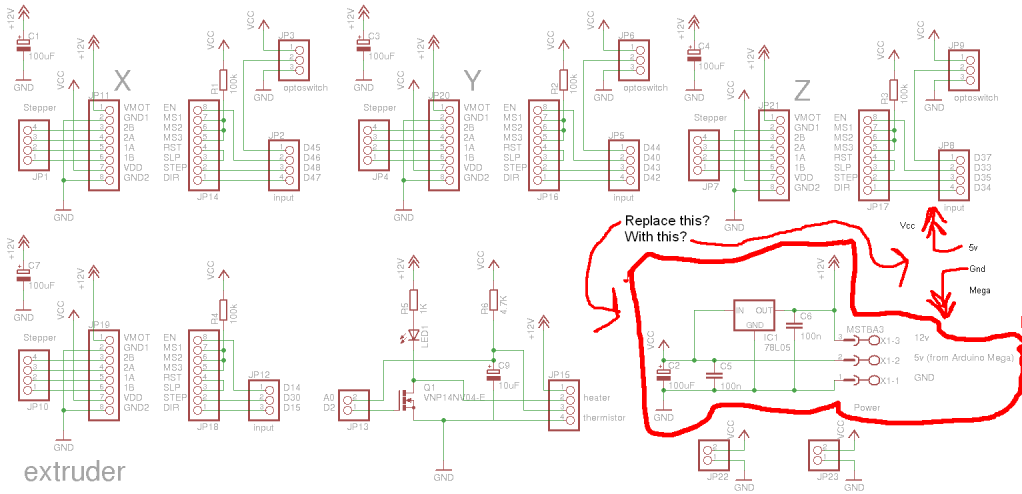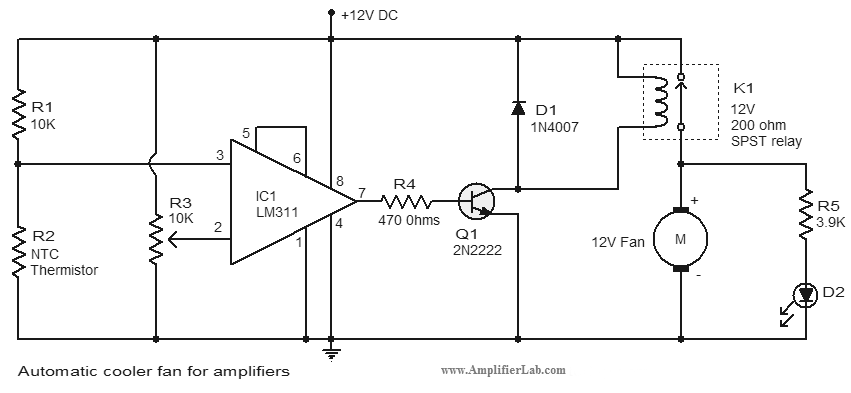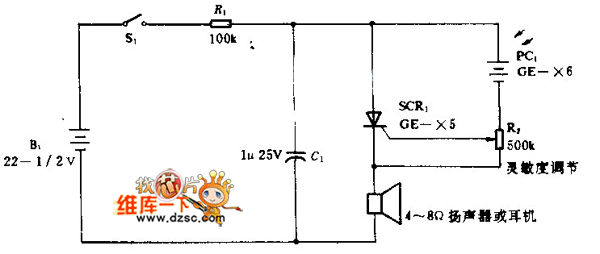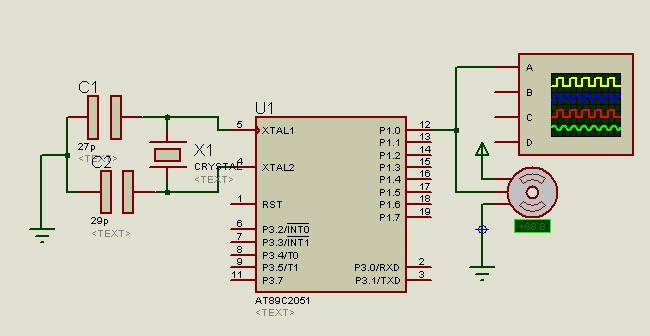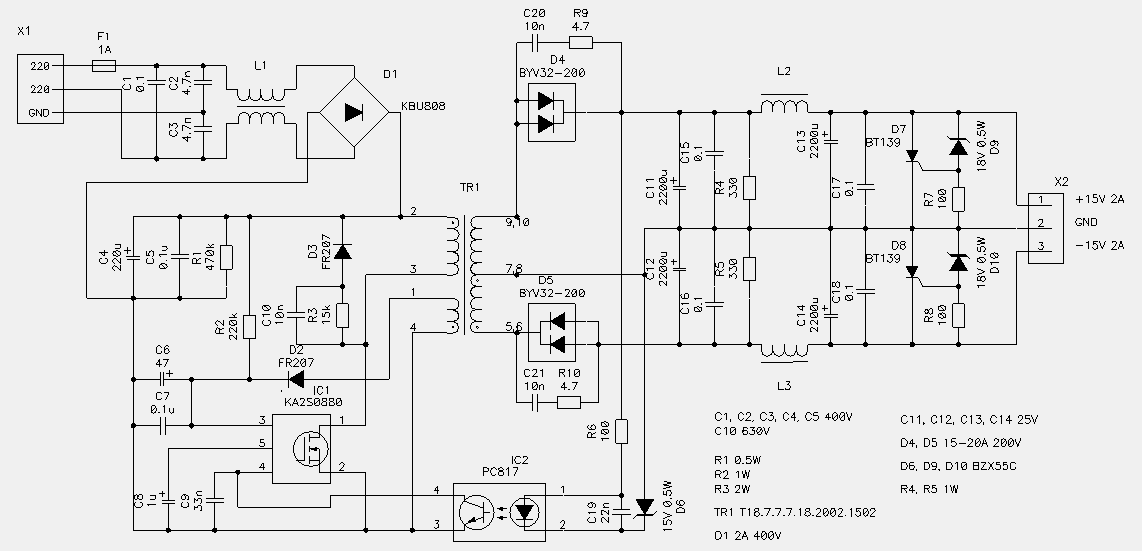
circuit 9 second countdown power on
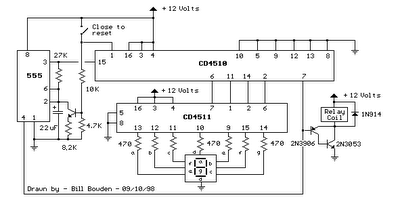
When the switch is opened, the timer generates an approximate 1-second clock signal, decrementing the counter until it reaches a count of zero. Upon reaching zero, the carry-out signal at pin 7 of the counter goes low, energizing a 12-volt relay and stopping the clock by sending a low signal to the reset line (pin 4). The relay remains energized until the switch is closed again, which resets the counter to 9. The 1-second clock signal from the 555 timer can be slightly adjusted in duration by modifying the resistor value connected to pin 3 of the timer.
The described circuit comprises a 555 timer configured in astable mode to generate a clock signal with a frequency of approximately 1 Hz. This clock signal is utilized to decrement a binary counter, typically a 74HC4040 or similar, which counts down from a preset value (in this case, 9). The counter output is monitored, specifically the carry-out signal at pin 7, which indicates when the counter has reached zero.
When the switch is opened, the timer begins its operation, producing a pulse every second. Each pulse causes the counter to decrement its value until it reaches zero. At this point, the carry-out signal transitions to a low state, which activates a relay. The relay operates at 12 volts and is often used to control higher power loads, providing isolation between the low voltage control circuit and the high voltage output.
The output from the relay can be used to control various devices or indicators. The circuit is designed to stop the timer when the carry-out signal goes low, achieved through a low signal applied to the reset pin (pin 4) of the timer. This effectively halts the clock signal generation, preventing further counting.
The relay remains energized until the switch is closed again, which serves as a manual reset mechanism for the counter. Closing the switch sends a high signal to the reset input of the counter, returning it to its initial state (count of 9). Additionally, the duration of the clock signal can be fine-tuned by adjusting the resistor connected to pin 3 of the 555 timer. This allows for flexibility in timing applications, accommodating different requirements for the timing interval.
This circuit can be employed in various applications, including timers for automatic systems, delay circuits, or any scenario where a timed output is required. Proper selection of components and values will ensure reliable operation and desired performance characteristics.When the switch is opened, the timer produces an approximate 1 second clock signal, decrementing the counter until the 0 count is reached. When the zero count is reached, the `carry out` signal at pin 7 of the counter moves low, energizing the 12 volt relay and stopping the clock with a low signal on the reset line (pin 4).
The relay will remain e nergized until the switch is again closed, resetting the counter to 9. The 1 second clock signal from the 555 timer can be adjusted slightly longer or shorter by increasing or decreasing the resistor value at pin 3 of the timer. 🔗 External reference
The described circuit comprises a 555 timer configured in astable mode to generate a clock signal with a frequency of approximately 1 Hz. This clock signal is utilized to decrement a binary counter, typically a 74HC4040 or similar, which counts down from a preset value (in this case, 9). The counter output is monitored, specifically the carry-out signal at pin 7, which indicates when the counter has reached zero.
When the switch is opened, the timer begins its operation, producing a pulse every second. Each pulse causes the counter to decrement its value until it reaches zero. At this point, the carry-out signal transitions to a low state, which activates a relay. The relay operates at 12 volts and is often used to control higher power loads, providing isolation between the low voltage control circuit and the high voltage output.
The output from the relay can be used to control various devices or indicators. The circuit is designed to stop the timer when the carry-out signal goes low, achieved through a low signal applied to the reset pin (pin 4) of the timer. This effectively halts the clock signal generation, preventing further counting.
The relay remains energized until the switch is closed again, which serves as a manual reset mechanism for the counter. Closing the switch sends a high signal to the reset input of the counter, returning it to its initial state (count of 9). Additionally, the duration of the clock signal can be fine-tuned by adjusting the resistor connected to pin 3 of the 555 timer. This allows for flexibility in timing applications, accommodating different requirements for the timing interval.
This circuit can be employed in various applications, including timers for automatic systems, delay circuits, or any scenario where a timed output is required. Proper selection of components and values will ensure reliable operation and desired performance characteristics.When the switch is opened, the timer produces an approximate 1 second clock signal, decrementing the counter until the 0 count is reached. When the zero count is reached, the `carry out` signal at pin 7 of the counter moves low, energizing the 12 volt relay and stopping the clock with a low signal on the reset line (pin 4).
The relay will remain e nergized until the switch is again closed, resetting the counter to 9. The 1 second clock signal from the 555 timer can be adjusted slightly longer or shorter by increasing or decreasing the resistor value at pin 3 of the timer. 🔗 External reference
